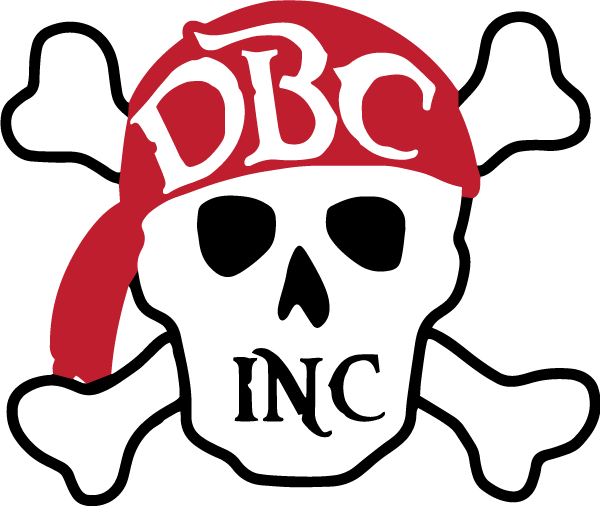Quinn Rollins, author of Play Like a PIRATE: Engage Students with Toys, Games, and Comics, has been a social studies teacher in Granite School District in Salt Lake City since 2004, where he currently serves as the social studies curriculum specialist.


Whether teaching children or adults, he believes in engaging students with humor, pop culture, and new perspectives. As a result, he’s been honored to work with the educational programs for the University of Utah, Utah State University, Brigham Young University-Idaho, and Westminster College of Salt Lake City. Quinn has also served as master teacher and mentor for a Teaching American History Grant and for a National Endowment for the Humanities Landmarks of American History Workshop in Chicago, Illinois.
In 2011, he received the Utah Council for the Social Studies Secondary Teacher of the Year award. In 2015, he was presented with “Utah’s Best of the West” award at the National Council for the Social Studies conference and the Best Historical Scene and Best Custom Minifigures awards at BrickSlopes 2015, Utah’s LEGO Convention.
Quinn loves presenting at local, state, and national conferences. His most popular presentations include student engagement, teaching with pop culture, the literacy of comic books and graphic novels, and using toys to teach.
Quinn’s hobbies include designing and playing with toys, doodling in staff meetings, reading comic books, and let’s say “running” to sound like a well-rounded person. He believes cheese is “an enemy to mankind” but won’t say no to pizza.
He earned his bachelor’s degrees in History Teaching and German Teaching and his master’s degree in Instructional Design and Educational Technology from the University of Utah.
Like a PIRATE™ Speaking Series
[divider style='full']
Keynote: Play Like a Pirate
Before becoming a middle school teacher, Quinn Rollins lived other lives. Drawing on his experiences as a cartoonist, a toy designer, and a gamer, he’s become a champion of the power of play in the classroom.
Students spend hours of every day bored. If they’re bored, they’re unlikely to remember what we’re trying to help them learn. Using tools they love – LEGO, Hot Wheels, action figures, Barbie, superheroes, and games – Rollins will help you make connections to your curriculum, bringing some fun back into your classroom.
Rollins shares both big ideas and practical strategies for how to use toys, games, and comics to engage your students – and will show you how the best tools to reach those kids were within your reach all along.
Learning with LEGO
From designing LEGO sets and minifigures on paper, to actually getting your hands on the colorful bricks and building with them, this session will show you everything you need to know about using LEGO in the classroom. We’ll go over basics for those of us who feel out of our element with construction toys, and go beyond the usual use of LEGO with classroom extensions that can turn a fun “activity” into a research project that will engage and excite your students.
Learning with LEGO (By Content Area)
If you’re looking for a Learning with LEGO session more targeted to a specific content area, there are ways to tailor the session for Language Arts, Social Studies, Science, or Math audiences. Each session has unique resources and lesson ideas, all using LEGO as a building block for student engagement.
Taking Action: Using Action Figures as Biographies and More
Students love action figures – what’s more, they can use the design of action figures, accessories, and playsets to tell someone’s life story. Whether a historic figure, a character from a novel, or a current personality, we’ll learn how to research the people, places, and things that kids will need to design action figures of their own!
Classic Toys, Innovative Lessons
There are some toys that everyone seems to have grown up with, whether they’re 5, 15, or 55. This session will explore new ways to use classic toys, including Play-Doh, Hot Wheels, Barbie, and Little Green Army Men in the classroom. We’ll also get an overview of how to use LEGO and action figures in lesson plans and activities.
Superheroes: Symbolism and Design
Your students know their names, their logos, and their capes. But do they recognize the symbolism that’s hidden within these heroes? This session will share examples of how to use the symbolism of superheroes to connect to your curriculum using established lesson plans. We’ll also use templates to design all-new superheroes, representing concepts that might be too abstract for some students to understand using traditional methods.
Beyond Batman: The Best Graphic Novels for Elementary Students
Graphic Novels have surged in popularity over the last decade, but the increased number of books doesn’t always mean an increase in quality. This session looks at the best graphic novels and comic books for teaching elementary students, with a focus on literacy and updated teaching strategies unique to visual storytelling.
Beyond Batman: The Best Graphic Novels for Secondary Students
Graphic Novels have surged in popularity over the last decade, but the increased number of books doesn’t always mean an increase in quality. This session looks at the best graphic novels and comic books for teaching secondary students, with a focus on content, literary criticism, and updated teaching strategies unique to visual storytelling.
Using Comic Books and Graphic Novels to Teach History and Biography
Some of the best non-fiction comics and graphic novels of the last decade have been in the field of history and biography. These books are rich opportunities for extended research and project-based learning. This session looks at five different books at different grade levels, with lesson plans and activities connecting to social studies and language arts curriculum.
“But I Can’t Draw!” – Teaching Your Students by Drawing Comics and Cartoons Anyway
From elementary through high school, you can engage students by teaching them how to draw comic strips, political cartoons, and even full-length comic books. These alternative assessments demonstrate their knowledge of your content, and let them exercise some creativity too! This session will coach you through the process of creating comics and cartoons, even if you don’t consider yourself an “artist.”
Doing More with Trading Cards
Many teachers have students design trading cards – then what? This session starts with creating trading cards as a research project, then moving beyond making the cards and into using them. Trading cards can be used for classroom games, for critical thinking, and be a springboard to greater creativity in your classroom.
Minecraft 101
Your students love Minecraft, your own kids love Minecraft, but you don’t know much about it? What was once just a game has become an indispensable tool for teachers across grades and curriculum. Come find out how Minecraft can be used as a one-time assignment or a long-term project.
Go Ahead and Pass Go – Create Your Own Board Games!
We assume our students are plugged into video games 24 hours a day, but nearly all students have experience with another kind of game—the board games we all grew up with. Come find out how to use existing board games, create board games assessing your curriculum, and even having students create and play their own games!
